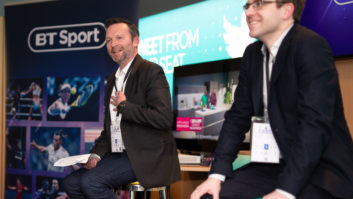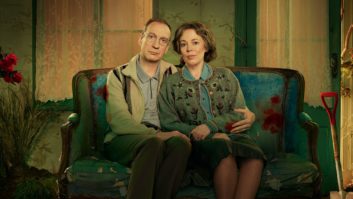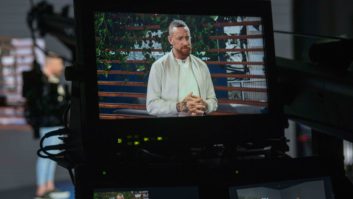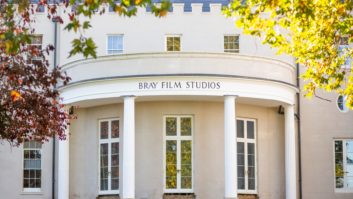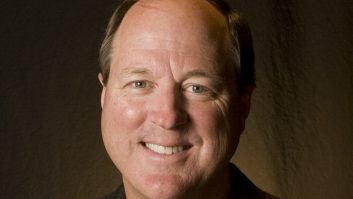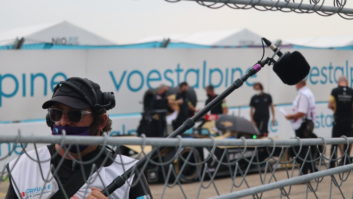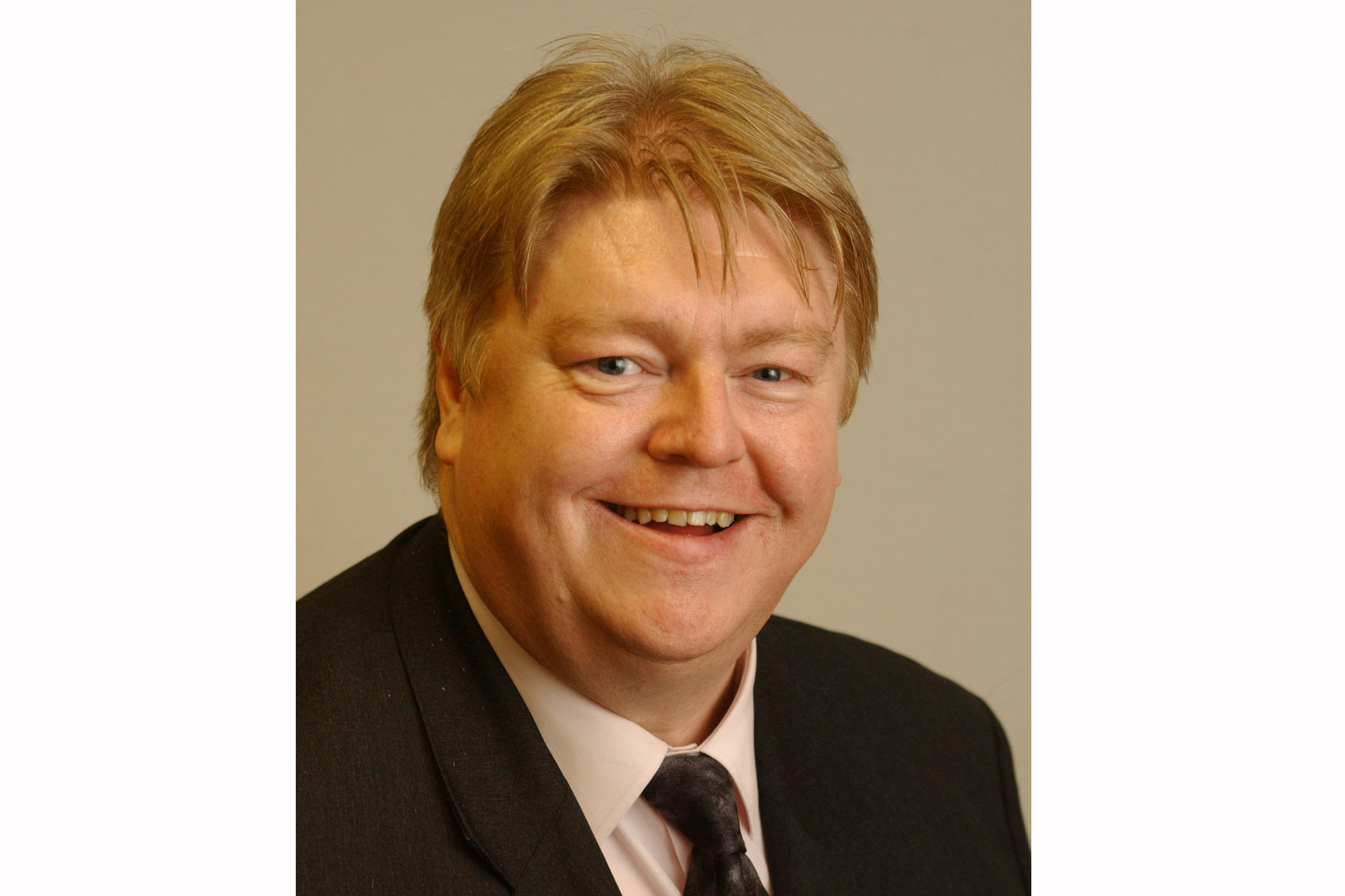
The second annual TVBAwards saw another much loved industry figure inducted into TVBEurope’s lifetime achievement hall of fame. This year, the spotlight shone brightly on the career of Adrian Scott, the hugely admired and widely respected industry veteran, who played no small part in opening the broadcasting world’s eyes to newsroom systems, and non-linear editing. Scott discussed his professional life with James McKeown
Adrian Scott had a fairly unusual education, so he relays, having started out at a small preparatory school in Scotland, followed by Rugby School for which he says “a prior reading of Tom Brown’s Schooldays was a perfectly adequate preparation”. His summers were spent in France, and then the University of North Carolina thanks to a “very generous American scholarship programme. I did a degree in journalism, which involved working in both radio and television…my start in the industry.”
Scott’s return to the UK coincided with the start of independent local radio. “I managed to get myself a job in the newsroom at Radio Clyde in Glasgow, not easy when your hometown is Edinburgh. After a couple of years, I moved to London to work as a presenter and producer at Independent Radio News and LBC, from where I went to TV-am as one of the launch team.
It was there where he first came into contact with broadcast technology. TV-am was pioneering in several respects, he says, being one of the first all-ENG news operations (three quarter-inch BVU) and also one of the first to dispense completely with script and prompter typists in the newsroom in favour of the very first generation BASYS Newsroom Computer System. “For reasons I still cannot explain, in addition to being news editor and head of forward planning, I became the in-house newsroom system super-user, and was largely responsible for figuring out how to do three hours of live television starting at six in the morning every day on a system which nobody knew how to use and which had no manual anyway. Fun!”
For a time, TV-am was one of the four or five newsrooms worldwide using a newsroom system, “of which by far the largest was CNN,” he states. “Another was the Channel 4 newsroom at ITN; and when the BASYS company went to the wall, ITN stepped in and bought it, largely to protect its own investment in the product. I was then invited to lunch at ITN and offered the job of European operations manager with the aim of trying to persuade other broadcasters to invest. This was in 1985.
So began the first of many evangelism roles Scott would take up in the industry. “At the time, no one in Europe had heard about what we now know as NRCS, or even about PCs, which didn’t really exist in those days anyway. I started travelling the continent with about a quarter of a ton of rather unwieldy demo equipment, trying to persuade a generation of journalists that learning how to type and then using an unwieldy green screen terminal would make their lives a lot easier.”
Amongst all the other firsts, the system Scott was selling was one of the very earliest commercially available UNIX-based systems. “Perhaps one of my most far-reaching career achievements was to go to Helsinki with my demo kit, to show it to YLE and MTV, whose editor-in-chief, Jan Torvalds, asked if I minded if his teenaged son came to have a look at the demo. This was, of course, the young Linus Torvalds, so I suppose you can call me the Godfather of LINUX!”
Over the next few years, the customer base increased from a handful to over a hundred, and included the BBC, NBC, ARD, NOS, NRK, SVT, and many more. In addition to travelling around Europe, Scott toured the national broadcasters in the USA, Canada, Australia, New Zealand and South Africa. All of this was a major reason why BASYS was awarded the Queen’s Award for Export Achievement in 1989.
The next phase came when ITN got into a financial crisis when the cost of building Gray’s Inn Road formed “a perfect storm with the cost of covering the first Gulf War,” he explains. “They decided to sell BASYS. The buyer was DEC, the Digital Equipment Corporation, who having seen us as a means of entry into the broadcast sector, then realised they hadn’t the faintest idea how to achieve it. The rumour went round that they were planning to close us down altogether.
“Having already encountered Avid Technology at various trade shows, I started a rear-guard action along with some Avid colleagues to persuade Avid’s board and shareholders that they should buy BASYS from DEC. With less than a week to go before our planned closedown, Avid and DEC both agreed, and the deal was done for an extraordinarily modest sum of money (none of which came to me, alas).”
At the time, Scott explains, Avid was almost entirely a post production-oriented company, “with practically no exposure in the broadcast industry. We soon changed that, and the second major evangelism role was to persuade newsrooms and news organisations to embrace non-linear editing and playout, which soon came to include the first working video server.”
The onset of non-linear video editing and playout brought with it a new generation of issues that the industry was yet to locate on its radar. “A small group of us at Avid began to think about these [issues], and I ended up drafting our thoughts into a paper for internal discussion. This ended up being the basis for a successful Avid US patent application describing a ‘Digital Multimedia Editing and Data Management System’ which allowed users to create, browse and catalogue multimedia assets. This was awarded in 1998, and was, I’m almost certain, one of the first mentions of the words digital, assets and management in the same sentence.”
Scott departed Avid in 2002 to start his own one-man consultancy business, Bakewell House, which he runs to this day. Two other roles of prominence that add some sizeable context to Scott’s legacy were those with IBC’s conference committee, and the Global Society for Asset Management (G-SAM). Following his exit from Avid, Scott’s influence in the industry began to flower.
“I had represented Avid on both the IABM management committee and the IBC exhibitors committee, and I continued in those roles but also started to sit on IBC’s conference committee and to take on a business development role with the IABM.” This latter role included helping to move the IABM towards appointing a full-time CEO, a job for which Scott was shortlisted “but lost out (quite rightly) to the wonderful Roger Crumpton.”
For almost ten years, Scott produced and chaired conference sessions at IBC, and was responsible for establishing, producing and chairing the early years of the IABM Annual Conference. “Both of these conferences were among the first to start seriously discussing such topics as how industry manufacturers can best survive the downturn; the skills shortage, especially of trained engineers; standards-driven systems integration; multiscreen/360° delivery; and (inevitably) the importance of metadata and media asset management.”
It was in connection with the latter that, in the mid-noughties, Scott became a founder and European Chair of G-SAM. “The society was conceived by a small group of us as a discussion forum and fledgling trade association within which all sides of the industry, standards bodies, broadcasters, and manufacturers, could exchange views and experiences in aid of developing common ideas and particularly standards applying to MAM and DAM.”
Scott also became a partner in Kane Consulting, a Paris-based boutique consultancy specialising in benchmarking and a clutch of specific technologies, including newsroom systems, automation, and archiving. He also took on management roles with Vitec, as interim chief customer officer, and another with what was then called Pro-Bel, now part of the Snell Advanced Media (SAM) group, where he was a director and chief marketing officer.
In 2009, Scott suffered a serious stroke “which knocked me off my feet for a while, and has left me with some lingering mobility issues. Thankfully, I have no mental or cognitive problems, and can still think and talk (to the great regret of those of my friends who think I talk too much).”
He claims to be “idly considering” retirement, having reached the milestone age famously committed to folklore by The Beatles on Sgt. Pepper’s Lonely Hearts Club Band. However, his work is not done yet.
Technologist, journalist, evangelist: however Adrian Scott’s legacy is defined, he will always be considered a giant of the industry, and most importantly to his colleagues, peers, and friends, one of its truest gentlemen.

